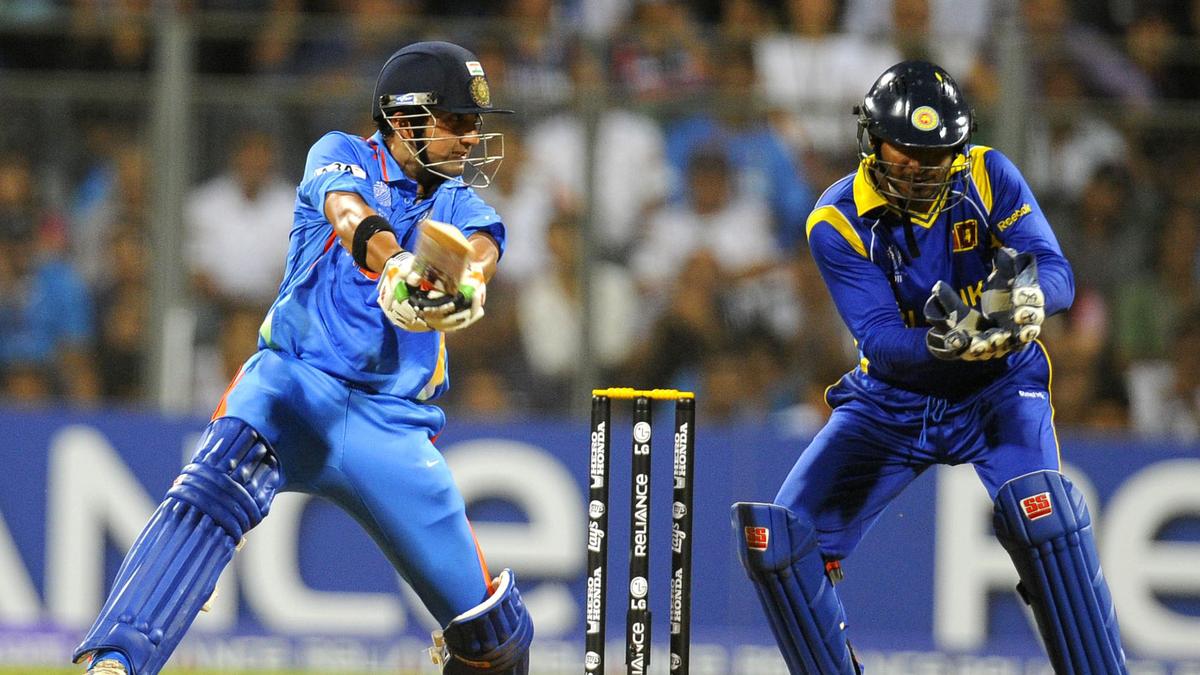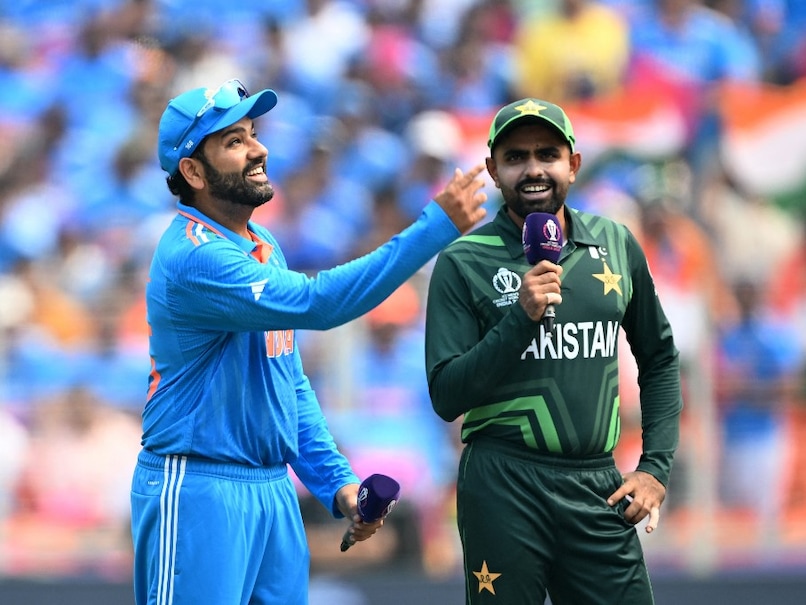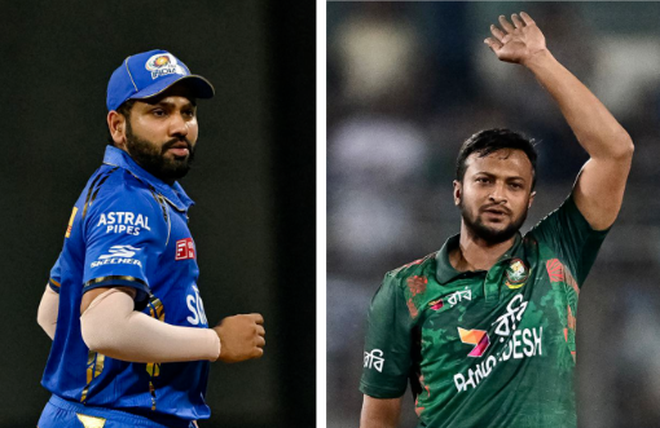In his prime, Gautam Gambhir batted as if he had a point to prove, not necessarily because he enjoyed the pursuit of runs. Make no mistake, he made runs — plenty of them, generally under pressure. He was India’s top scorer during its victories in the final of the T20 World Cup against Pakistan in 2007 and the 50-over World Cup against Sri Lanka in 2011, waged several in-the-trenches battle in Test cricket, most notably in Napier in 2009 and Cape Town in 2011 to secure face-saving draws, and tackled the meanest and the quickest without taking a backward step, the size of his heart in inverse proportion to his diminutive frame.
Feisty, pugnacious and determined were the words that came to mind when the left-hander was going about his business. Most left-handers fall in the elegant, graceful, aesthetically pleasing category. And while Gambhir was no Shivnarine Chanderpaul or Graeme Fowler, he most certainly wasn’t David Gower or Brian Lara. Gambhir was no-fuss, intent on getting the job done and not caring if he looked good doing so. It’s precisely this trait that should stand him in good stead as he embarks on a new, exciting challenge that should have far-reaching ramifications for Indian cricket.
Unlike the man he idolises and whose work ethic he tried to emulate, Gambhir takes charge of the Indian senior team with little to no previous coaching experience. Rahul Dravid’s succession of Ravi Shastri as the head coach in November 2021 was on the back of four years of coaching the India ‘A’ and Under-19 teams.
No deterrent
Gambhir has been a mentor to IPL franchises Lucknow Super Giants and Kolkata Knight Riders, the defending champion, but he has neither a formal coaching certification nor the tenuous designation of a ‘coach’. That shouldn’t be a deterrent, just like it wasn’t with Shastri or with Anil Kumble, whose successful one-year stint at the helm was sandwiched between Shastri’s tenures as team director and head coach.
Gambhir has two and a half years, at least, as per the terms of his contract, to add greater gravitas to his already not-inconsiderable legacy. He might not have been as celebrated as his opening partner and one-time great friend Virender Sehwag, or Mahendra Singh Dhoni or Virat Kohli — we are not even treading into the Sachin Tendulkar-Dravid-V.V.S. Laxman territory — but he has built up a volume of work second to none.
Nursing a grouse
He perhaps nurtures the grouse that he hasn’t got his due, but that’s how the cookie crumbles sometimes in professional sport, where glamour quotient counts for plenty and workmanlike efficiency is overlooked, almost taken for granted. Gambhir, and those who played alongside and against him, know the value he brought to the batting crease, the price he put on his wicket, the knocks he took on his body and limb, the bloody-mindedness with which he approached every innings.
Proud champions thrive in the respect of their colleagues and opponents, and while Gambhir the batter might have reason to believe he deserved a greater share of the collective limelight, he will take heart from the fact that oppositions knew they were in for a scrap — sometimes literally — when he marched out, bat in hand, helmet in place, heart bleeding for team and country.
Now in his new capacity, Gambhir has another opportunity to showcase his spunk and spirit. Unlike in the past, he won’t be able to do it all on his own. He will have little say in how things unspool once the battle commences, he will oftentimes sit on the outside, frustrated and feeling a little helpless, but that really is the lot of every player-turned-coach who might have been there and done that, but can now only hope that the strategies conceived in the backroom are executed meticulously by those under his command.
It hasn’t taken Gambhir long to express his ‘authority’, though that might not be the most appropriate word given that the Indian cricketing landscape is firm in its conviction that the captain must remain the boss and the coach must complement / augment him rather than staying up front and in the foreground. Greg Chappell found that out the hard way, and those who have succeeded him have assiduously attempted to steer clear of that approach even though India has had several celebrated former cricketers as head coaches. Gambhir will be — will have to be — the proverbial older brother with a benevolent hand around the shoulder in public, even when he is smarting on the inside and dangerously close to blowing a short fuse.
In the appointment of Suryakumar Yadav as Rohit Sharma’s successor at the helm of the 20-over outfit lies a very typical Gambhir hand, pragmatic and practical rather than emotional and sentimental. The majority believed Hardik Pandya, the Mumbai Indians skipper and Rohit’s influential deputy at the T20 World Cup in the Americas, would slot in as the natural successor, but in conjunction with Ajit Agarkar’s selection panel, Gambhir too was of the view that India would be better served by having a stable leadership figure who could be banked on to be available more often than not.
Hardik is one of those sportspersons burdened with a protesting, uncooperative body despite the fact that he is among the hardest working and is always at peak fitness when he isn’t laid low by injuries. A promising Test career has come to a juddering halt after just 11 appearances, the all-rounder reconciled to the reality that his body won’t consistently survive the rigours of five-day cricket. He has had numerous injuries, including a few freakish ones, and has played in only 46 of India’s 79 T20Is since the beginning of 2022.
That, combined with the pressing necessity to manage his workload, forced the decision-makers to look elsewhere. The nod went to Suryakumar, until recently the No. 1 T20I batter in the world and the most obvious certainty when it comes to the 20-over format. Suryakumar has led India previously in seven T20s and is still learning the ropes, but he has a year and a half to grow into the role ahead of the next World Cup, in 2026 when India will seek to defend its title on home turf.
Gambhir walks straightaway into a packed schedule full of arduous outings. The six-match white-ball tour of Sri Lanka is a nice way to break him in, for in wait over the next year lie five-Test tours of Australia and England, which will bookend the 50-over Champions Trophy, being revived after seven years.
The inclusion in the One-Day International side for the Lankan sojourn of skipper Rohit and Virat Kohli has a Gambhir touch to it; India has only six ODIs before the Champions Trophy and it is imperative that the team most likely to play in that tournament stays together. Towards that end, getting Rohit and Kohli on board when they might have preferred to rest and recharge their batteries — one is only speculating here, mind — is a step in the right direction.
Of the regulars, only the peerless Jasprit Bumrah has been given a break while the exclusion of Ravindra Jadeja, like Rohit and Kohli recently retired from T20Is, should be construed as potentially the end of his limited-overs international career.
Gambhir has inherited a somewhat ageing Test unit from Dravid, with several key components well into their 30s. Skipper Rohit is 37, Kohli will turn 36 in November, Jadeja is a seasoned 35 and his spin twin R. Ashwin, the country’s second highest wicket-taker and one of Gambhir’s favourites, will tick over to a ripe 38 in two months’ time.
Pace ace Mohammed Shami, who hasn’t played any cricket since the 50-over World Cup final on November 19, is closing in on 34. This quintet isn’t just any set of five, it’s a band of brothers who have been massive figures in Indian cricket for the last decade and more and have played integral roles in the country’s climb to the top of the charts across formats.
Process of transition
At some stage, the process of transition will have to gather speed. During Dravid’s first, original two-year tenure, only two batters — Shreyas Iyer and Yashasvi Jaiswal — burst through, with a decided emphasis on ageing, fading stars Cheteshwar Pujara and Ajinkya Rahane. Forced through a series of events during the home showdown against England earlier this year, India blooded Rajat Patidar, Sarfaraz Khan, Devdutt Padikkal and Dhruv Jurel with largely encouraging results, so in some ways, the transitory exercise has already started, at least from the batting perspective.
Rohit and Kohli are irreplaceable, of course, but how do India even start to think about a replacement, at some stage, for off-spinner supreme Ashwin? That, more than anything else, will seize the 42-year-old new head coach’s attention the most. India has gotten so used to seeing Ashwin weave his magic that he has almost been taken for granted. The prospect of life in Test cricket without the engineer from Chennai is a frightening one, but time stands still for no one and life will go on. Just with who, is the big question.
Gambhir’s initial term takes him beyond the 2027 50-over World Cup, which means there is so much at stake, but also so many opportunities for him to show everyone that he is the absolute right choice. Point to prove, remember? This is as good a time as any for Gambhir, the head coach, to invoke the spirit of Gambhir, the feisty, pugnacious batter.




















